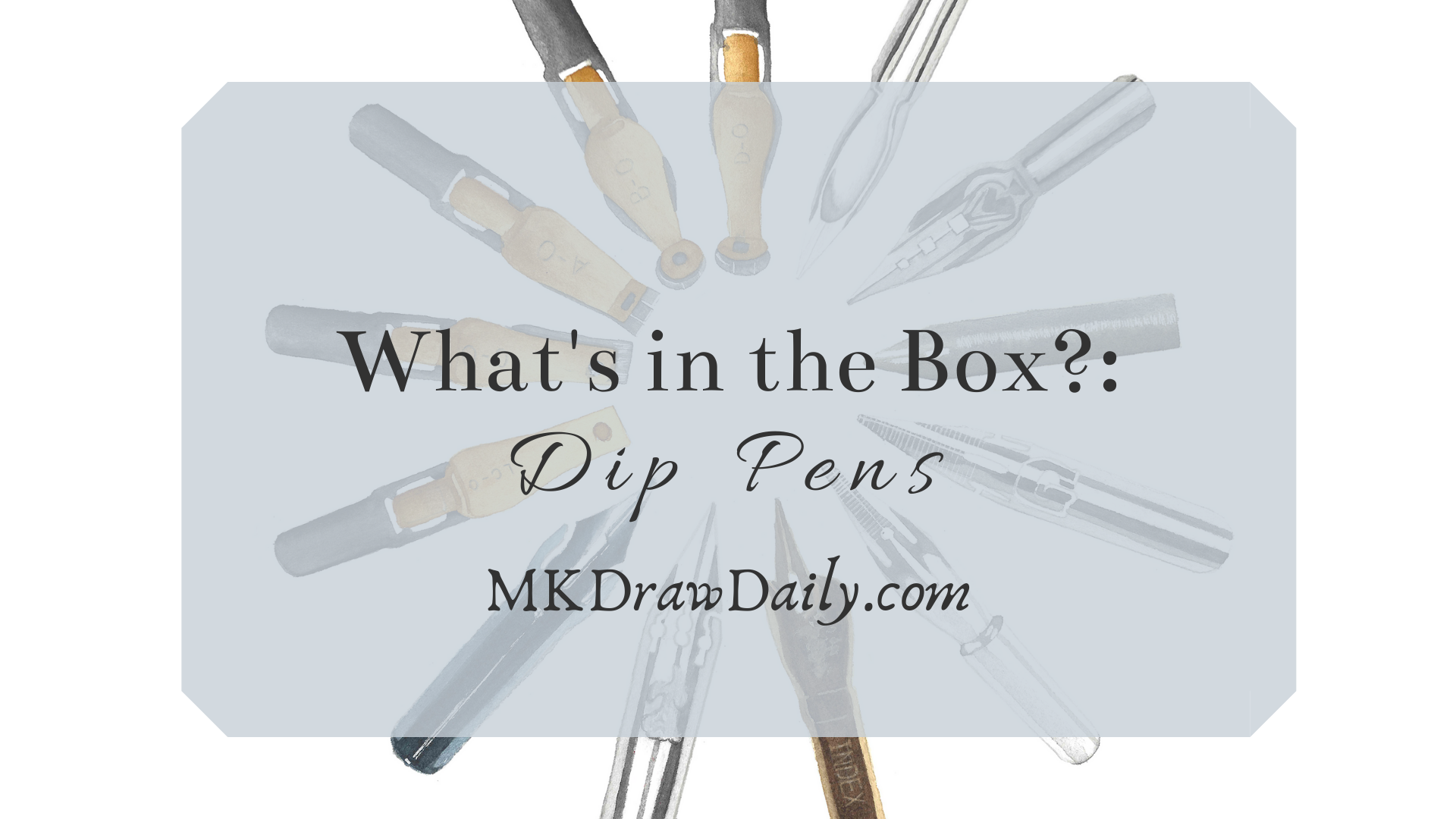WITB: Dip Pen Anatomy
AN EASY GUIDE TO ESSENTIAL ART TOOLS
Dip Pen Anatomy | Holders | Nibs | Popular Brands | 10 Tips
Welcome back to my official blog guide, “What’s in the Box!?”
And today we are going to approach the topic of dip pens.
Today we will be discussing “Everything You Need to Know About Dip Pens” however, I have been told that some people find the presentation - meaning everything being in one place - overwhelming. You can follow one of the links above to jump to a different blog post where the information has been divided into parts.
Throughout the millennia there have been many forms of writing, but hand written scripts have been one of the most common throughout history. Writing by hand requires a delicate tool and various instruments have been conceived, but one of the most popular, even to this day, is known as the dip pen. Although versions of such a pen have been found throughout all of the common era, it was not until the early 1800’s that this technology started to be mass produced. These pens do not have an on-board reservoir so they require frequent recharging when in use. Ink then, is instead accessed from a shallow bowl or bottle that can be drawn from when writing or drawing.
Despite many technological advances since the 1800’s, such as the development of the fountain pen, ball point pen, felt tip pen and others many writers, calligraphers, and artists continue to dabble with this old fashioned technology. Considering just how long the dip pen has been around, it’s no surprise that there have been may different types of pen holders, and nibs created over the years, some which are more common than others. Today we will go over just a few of the more common dip pen designs.
THE DIP PEN
DIP PEN ANATOMY
The Tip
The tip is the only part of the nib that is going to be making direct contact with your writing surface. Over time the tip of the nib (or the tines) can get worn out or they may end up deforming, bending, or breaking. When this occurs it is important that you replace the nib as soon as possible as this can lead to other inconveniences such as randomly splattering ink or potentially damaging the surface being written or on.
The Tines and Slit
The tines and slit are the three parts that make up the tip of the nib. The tines are the most fragile part of the nib, and fine pointed nibs in particular can easily snag and damage not only the thing it snags, but also can bend or damage the tines of the nib.
It is the slit that allows a steady stream of ink to the tip of the nib.
The Body and Heel
The body and heel of the nib get inserted into the pen insert, keeping the nib snuggly fit.
The Pen Insert and Holder
The pen insert is the location where the nib gets attached to the pen holder. Remember to remove the nib from the pen insert so that they do not rust together. Pen holders come in a few different shapes and sizes. You have the standard - ‘classic’ or ‘straight’ - oblique, and quill.
Dip Pen Anatomy | Holders | Nibs | Popular Brands | 10 Tips

